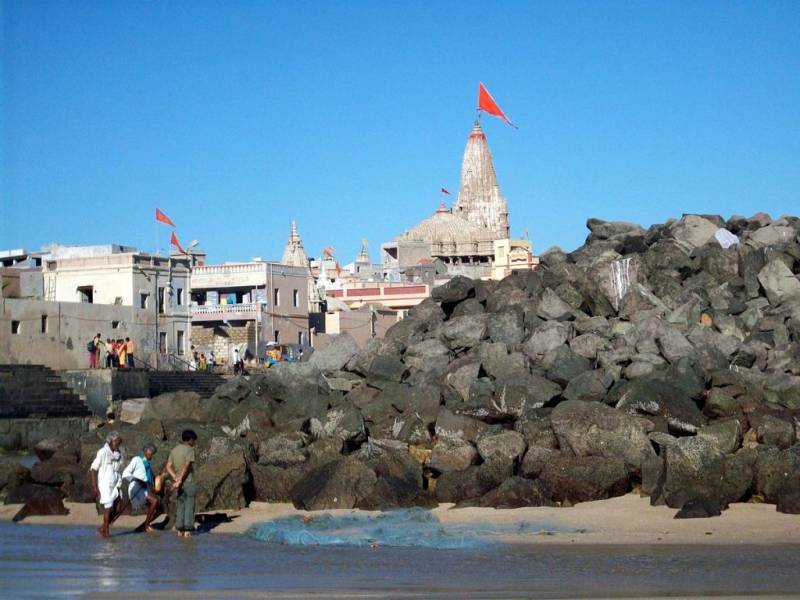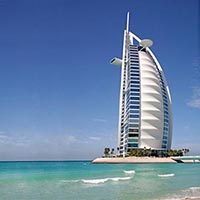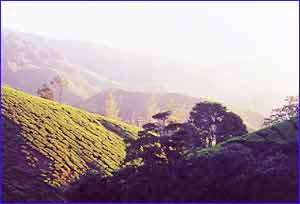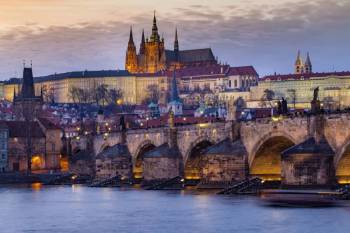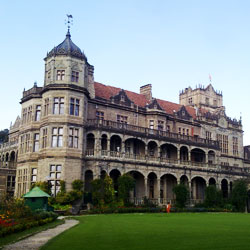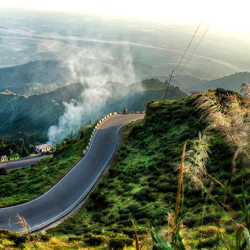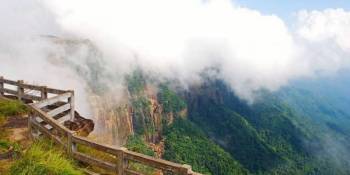- Rangareddy, Telangana
- View Mobile Number
Gujarat 6 Nights 7 Days Tour Package
Link Copied
Duration : 6 Nights / 7 Days
Destination Covered : Ahmedabad, Bhavnagar, Dwarka, Somnath, Somnath, Pavagadh, Gandhinagar, Gandhi Ashram, Dakor, Takhteshwar Temple, Rukmini Temple, Dwarkadhish Temple, Adalaj Vav
Tour Activities : Sightseeing
Tour Themes : Religious & Pilgrimage, Culture & Heritage
21650
Per Person
* Mentioned prices may vary depending upon date of travel, hotel availability, surge pricing and seasonal rush.
Ahmedabad, Bhavnagar and Dwarka Tour Itinerary
Day 1
Arrive in Ahmedabad and transfer to your hotel.
Ahmedabad is Located on the banks of the river Sabarmati; the city was founded by Sultan Ahmad Shah in 1411. Today it is one of the fastest growing cities of India and is an immense repository of tradition, history & culture. Its famous walled area is one of the finest examples of community living & the city thrived as the textile capital & was nicknamed “Manchester of the East’ in 1888. This multicultural city is home to some of the finest Indo-Saracenic mosques & Jain temples.
The old city of Ahmedabad is dotted with labyrinthine by-lanes called ‘polls’. The exquisite carved wooden mansions and havelis are marvelous. The city also offers a rich architectural legacy that blends Hindu and Muslim schools of architecture, stone and brick with arches, domes and vaults, carved pillars, trefoil designs besides the modern buildings designed by the famous French architect, Le Corbusier and Louis Kahn.
Later proceed for a city tour of Ahmedabad.
Gandhi Ashram: On a quiet peaceful stretch of the Sabarmati River, Mahatma Gandhi set up a simple retreat in 1915. This was his Satyagraha Ashram and for many years it was the nerve center of India’s freedom movement. It was from here, in 1930, that Mahatma began his famous Dandi March to the sea to protest the Salt Tax imposed by the British. Hridaya Kunj, the simple cottage where he lived, is now a national monument and preserved as it was during the Mahatma’s lifetime. Must pick gifts and souvenirs from the Ashram shop. Spend a little time here by the river watching the parrots and the squirrels. Peace and tranquility prevail here.
Sidi Sayed Mosque: One part of the wall in the old citadel of the mosque built by Ahmed Shah’s slave, Sidi Sayed, is celebrated the world over for its exquisite stone window tracery – a superb & peerless example of delicate carving that transforms stone into filigree.
Jumma Masjid: The Friday mosque was built by the city’s founder, Sultan Ahmed Shah, in 1423. Built of yellow sandstone in an architectural style that combines the best of Muslim & Hindu traditions. It stands on 260 pillars that support 15 domes at varying elevations. The heritage walk ends here, if you have already visited the monument during your walk, you may skip it the next day.
Teen Darwaja: The triple-arched gateway was built by Sultan Ahmed Shah to serve as the royal entrance to the Maidan Shahi or the Royal Square. It is in an imposing monument of perfect proportions & highly ornate buttresses.
Hutheesing Jain Temple: Built outside the Delhi Gate in 1850 by a rich Jain merchant, the Hutheesing Temple is the best known of Ahmedabad’s many ornate Jain temples.
Adalaj Step-well: Step wells were built in olden times to serve the main purposes of – holding rainwater for later use, a resting place for the travelers, a watering hole for the travelers who had caravans and animals with them. Best examples of rainwater harvesting! The Adalaj step well is situated 17kms north of Ahmedabad. The step well at the village of Adalaj is another fine example of this magnificent architectural form. Adalaj Vav is richly carved, every pillar and wall surface covered with leaves and flowers, birds and fishes and friezes of ornamental designs.
Akshardham: Lord Swaminarayan, born in Chapaya in Uttar Pradesh, took a seven-year pilgrimage in Gujarat to preach his religion. He built six temples, the first being at Kalupur in Ahmedabad. Akshardham, the Swaminarayan temple of Gandhinagar, is a modern complex, built in traditional Indian architectural style from 6,000 metric tons of pink Rajasthan sandstone, carved by expert artisans from Bansipahadpur. The temple is set in a multi-acre garden called Sahajanand Van, with intricate sculptures of Hindu Gods. There is a gold leaf copper sculpture of Lord Swaminarayan that faces similar sculptures of Gunatinand Swami. The interiors have beautiful columns in rosewood that rise up to a high dome. Akshardham remains closed on Mondays.
Overnight at hotel
Ahmedabad is Located on the banks of the river Sabarmati; the city was founded by Sultan Ahmad Shah in 1411. Today it is one of the fastest growing cities of India and is an immense repository of tradition, history & culture. Its famous walled area is one of the finest examples of community living & the city thrived as the textile capital & was nicknamed “Manchester of the East’ in 1888. This multicultural city is home to some of the finest Indo-Saracenic mosques & Jain temples.
The old city of Ahmedabad is dotted with labyrinthine by-lanes called ‘polls’. The exquisite carved wooden mansions and havelis are marvelous. The city also offers a rich architectural legacy that blends Hindu and Muslim schools of architecture, stone and brick with arches, domes and vaults, carved pillars, trefoil designs besides the modern buildings designed by the famous French architect, Le Corbusier and Louis Kahn.
Later proceed for a city tour of Ahmedabad.
Gandhi Ashram: On a quiet peaceful stretch of the Sabarmati River, Mahatma Gandhi set up a simple retreat in 1915. This was his Satyagraha Ashram and for many years it was the nerve center of India’s freedom movement. It was from here, in 1930, that Mahatma began his famous Dandi March to the sea to protest the Salt Tax imposed by the British. Hridaya Kunj, the simple cottage where he lived, is now a national monument and preserved as it was during the Mahatma’s lifetime. Must pick gifts and souvenirs from the Ashram shop. Spend a little time here by the river watching the parrots and the squirrels. Peace and tranquility prevail here.
Sidi Sayed Mosque: One part of the wall in the old citadel of the mosque built by Ahmed Shah’s slave, Sidi Sayed, is celebrated the world over for its exquisite stone window tracery – a superb & peerless example of delicate carving that transforms stone into filigree.
Jumma Masjid: The Friday mosque was built by the city’s founder, Sultan Ahmed Shah, in 1423. Built of yellow sandstone in an architectural style that combines the best of Muslim & Hindu traditions. It stands on 260 pillars that support 15 domes at varying elevations. The heritage walk ends here, if you have already visited the monument during your walk, you may skip it the next day.
Teen Darwaja: The triple-arched gateway was built by Sultan Ahmed Shah to serve as the royal entrance to the Maidan Shahi or the Royal Square. It is in an imposing monument of perfect proportions & highly ornate buttresses.
Hutheesing Jain Temple: Built outside the Delhi Gate in 1850 by a rich Jain merchant, the Hutheesing Temple is the best known of Ahmedabad’s many ornate Jain temples.
Adalaj Step-well: Step wells were built in olden times to serve the main purposes of – holding rainwater for later use, a resting place for the travelers, a watering hole for the travelers who had caravans and animals with them. Best examples of rainwater harvesting! The Adalaj step well is situated 17kms north of Ahmedabad. The step well at the village of Adalaj is another fine example of this magnificent architectural form. Adalaj Vav is richly carved, every pillar and wall surface covered with leaves and flowers, birds and fishes and friezes of ornamental designs.
Akshardham: Lord Swaminarayan, born in Chapaya in Uttar Pradesh, took a seven-year pilgrimage in Gujarat to preach his religion. He built six temples, the first being at Kalupur in Ahmedabad. Akshardham, the Swaminarayan temple of Gandhinagar, is a modern complex, built in traditional Indian architectural style from 6,000 metric tons of pink Rajasthan sandstone, carved by expert artisans from Bansipahadpur. The temple is set in a multi-acre garden called Sahajanand Van, with intricate sculptures of Hindu Gods. There is a gold leaf copper sculpture of Lord Swaminarayan that faces similar sculptures of Gunatinand Swami. The interiors have beautiful columns in rosewood that rise up to a high dome. Akshardham remains closed on Mondays.
Overnight at hotel
Day 2
Today after breakfast I proceeded for a day excursion to Dakor and Pavagadh.
Dakor, in its earlier phases as pilgrimage center in Gujarat, was famous for the Dank Nath temple, a place of Shiva worship. In the later phases, it developed into a Vaishnavites center with the growing fame of Ranchhodraiji temple, which was built in 1772 A.D. Today this place is known not only as a pilgrimage center but also a trading center where one can get the articles related to puja, and other rituals.
Pavagadh: Most of the Hindus in India have faith in goddess Mahakali, particularly from the western region covering the states of Gujarat, Rajasthan & Maharashtra. The famous and the oldest temple of Mahakali is situated at Pavagadh, near Vadodara, one of the main cities of Gujarat. The temple has become the place of pilgrimage for almost all Hindus in India. This temple is among the three main Shakti Peethas in Gujarat. It has been said in Hindu Shastras that after the famous Tandava dance of Lord Shiva, the various parts of the body of Sati fell at many places. These places are called Shakti Peethas. It is said that the left breast of the Sati had fallen here at Pavagadh. As the name suggests, the temple is located on a mountain, near to the Champaner town. Later I drove back to Ahmedabad.
Overnight at hotel
Dakor, in its earlier phases as pilgrimage center in Gujarat, was famous for the Dank Nath temple, a place of Shiva worship. In the later phases, it developed into a Vaishnavites center with the growing fame of Ranchhodraiji temple, which was built in 1772 A.D. Today this place is known not only as a pilgrimage center but also a trading center where one can get the articles related to puja, and other rituals.
Pavagadh: Most of the Hindus in India have faith in goddess Mahakali, particularly from the western region covering the states of Gujarat, Rajasthan & Maharashtra. The famous and the oldest temple of Mahakali is situated at Pavagadh, near Vadodara, one of the main cities of Gujarat. The temple has become the place of pilgrimage for almost all Hindus in India. This temple is among the three main Shakti Peethas in Gujarat. It has been said in Hindu Shastras that after the famous Tandava dance of Lord Shiva, the various parts of the body of Sati fell at many places. These places are called Shakti Peethas. It is said that the left breast of the Sati had fallen here at Pavagadh. As the name suggests, the temple is located on a mountain, near to the Champaner town. Later I drove back to Ahmedabad.
Overnight at hotel
Day 3
After breakfast, visit Bet Dwarka & Nageshwar temple. Bet Dwarka: Bet is situated at 30kms from Dwarka and is surrounded by sea from all sides. One can reach Bet from Dwarka through Okha by road. On reaching Okha port jetty, one can reach Bet through a little sea journey by a small boat.
Nageshwar Temple or Nagnath Temple is located on the route between Gomati Dwarka and the Bet Dwarka Island on the coast of Saurashtra in Gujarat. The Jyotirlinga enshrined in the Temple of Nagnath is known as Nageshwar Mahadev and attracts thousands of pilgrims all around the year. This powerful Jyotirlinga symbolizes protection from all poisons. It is said that those who pray to the Nageshwar Lingaa become free of poison. The Rudra Samhita shloka refers to Nageshwar with the phrase ‘Darukavana Nagesham’.
The Rukmini temple, dating from 12 to 13 Century, was built in honour of Rani Rukmani, princess of Vidharba, which was to be married to Sishupala, but fled with Lord Krishna. This small temple, 1.5 km north of the city, is an architectural masterpiece. The temple walls are decorated with beautiful paintings and sculptures.
Gopi Talav: This is the place where Lord Krishna used to play with his Gopis. There is a small pond where it is said that Lord Krishna used to play with the Gopika Stress (Gopika Women).
Overnight at hotel
Nageshwar Temple or Nagnath Temple is located on the route between Gomati Dwarka and the Bet Dwarka Island on the coast of Saurashtra in Gujarat. The Jyotirlinga enshrined in the Temple of Nagnath is known as Nageshwar Mahadev and attracts thousands of pilgrims all around the year. This powerful Jyotirlinga symbolizes protection from all poisons. It is said that those who pray to the Nageshwar Lingaa become free of poison. The Rudra Samhita shloka refers to Nageshwar with the phrase ‘Darukavana Nagesham’.
The Rukmini temple, dating from 12 to 13 Century, was built in honour of Rani Rukmani, princess of Vidharba, which was to be married to Sishupala, but fled with Lord Krishna. This small temple, 1.5 km north of the city, is an architectural masterpiece. The temple walls are decorated with beautiful paintings and sculptures.
Gopi Talav: This is the place where Lord Krishna used to play with his Gopis. There is a small pond where it is said that Lord Krishna used to play with the Gopika Stress (Gopika Women).
Overnight at hotel
Day 4
Early morning, visit the Dwarkadhish Temple and witness the Aarti.
After breakfast drive to Somnath visiting Porbandar enroute.
Porbandar, the coastal heritage town of Gujarat is located on the Saurashtra peninsula, on the Arabian Sea. This city is described in Skanda Purana as Sudamapuri and Ashmavati and had a flourishing trade with Africa and Arabia. Till date, the spice market in Porbandar draws a huge crowd. According to the legends, this city was the main link of the great friendship between Lord Krishna and Sudama. Porbandar was established as a capital by Rana Sartanji in 1785 AD. Porbandar was the former capital of the Jethwa Rajput petty princely state. The most impressive feature of Porbandar is the city planning and the stone buildings with ashlar masonry and rich carving, the facades of the houses on either side of the streets, with windows and carved gateways. Porbandar is also associated with Mahatma Gandhi, the father of the nation as he was born here. Today, fine quality silk and cotton are manufactured here. There are also chemical factories and cement works.
Later visited Kirti Mandir – Kirti Mandir was the house of Mahatma Gandhi and Kasturba, his wife. This place is situated near the place where the Mahatma was born. This place is now a small museum and has a Gandhian library and a prayer hall. Bharat Mandir is another place to visit, which houses relief maps of India and reliefs of great historical personalities who shaped India’s future.
Later continue to drive to Somnath; arrive at Somnath and transfer to your hotel.
Somnath consists of a few streets leading away from its phoenix-like temple. The rugged sea below gives it a lonely, wistful charm. Somnath is mainly known for the legendary shore temple of Somnath, which is dedicated to Lord Shiva. The temple is an example of grit and determination and how to rise out of downfall as the temple has been plundered and destroyed many times and re-erected again in all its glory. To be precise, destroyed seven times and built eight!
The legendary shore temple of Somnath is one of the twelve most sacred shrines dedicated to Lord Shiva. The temple contains the Jyotirlinga of Lord Shiva. According to the legends, the Somnath temple is incredibly old and was originally built in gold by Somraj, the Moon God. Later, it was rebuilt by Ravana, in silver; then by Krishna in wood and Bhim Dev in stone. Mahmud of Ghazni, upon hearing the description of the richness of the Somnath temple by Al Biruni, an Arab traveler, visited this temple in 1024 AD. At that time, this temple had about 300 musicians, 500 dancing girls and 300 barbers to shave off the heads of pilgrims. After a two day’s battle, Mahmud destroyed the temple and carried away jewels and gold to his homeland. In all, the Somnath temple was rebuilt and destroyed eight times. This temple was finally rebuilt in 1950 with the support of Sardar Vallabhabhai Patel. The current temple was built as per the traditional designs on the original site by the sea and is a serene, symmetrical, and sinuous structure. Today, this majestic temple is a replica of the earlier temple.
Later visit Bhalka Tirth – Bhalka Tirth is situated halfway between Veraval and Somnath. At this place, Lord Krishna was mistaken for a deer and wounded by an arrow. It is here that Lord Krishna decided to leave his human form and proceed to the eternal world.
Overnight at hotel
After breakfast drive to Somnath visiting Porbandar enroute.
Porbandar, the coastal heritage town of Gujarat is located on the Saurashtra peninsula, on the Arabian Sea. This city is described in Skanda Purana as Sudamapuri and Ashmavati and had a flourishing trade with Africa and Arabia. Till date, the spice market in Porbandar draws a huge crowd. According to the legends, this city was the main link of the great friendship between Lord Krishna and Sudama. Porbandar was established as a capital by Rana Sartanji in 1785 AD. Porbandar was the former capital of the Jethwa Rajput petty princely state. The most impressive feature of Porbandar is the city planning and the stone buildings with ashlar masonry and rich carving, the facades of the houses on either side of the streets, with windows and carved gateways. Porbandar is also associated with Mahatma Gandhi, the father of the nation as he was born here. Today, fine quality silk and cotton are manufactured here. There are also chemical factories and cement works.
Later visited Kirti Mandir – Kirti Mandir was the house of Mahatma Gandhi and Kasturba, his wife. This place is situated near the place where the Mahatma was born. This place is now a small museum and has a Gandhian library and a prayer hall. Bharat Mandir is another place to visit, which houses relief maps of India and reliefs of great historical personalities who shaped India’s future.
Later continue to drive to Somnath; arrive at Somnath and transfer to your hotel.
Somnath consists of a few streets leading away from its phoenix-like temple. The rugged sea below gives it a lonely, wistful charm. Somnath is mainly known for the legendary shore temple of Somnath, which is dedicated to Lord Shiva. The temple is an example of grit and determination and how to rise out of downfall as the temple has been plundered and destroyed many times and re-erected again in all its glory. To be precise, destroyed seven times and built eight!
The legendary shore temple of Somnath is one of the twelve most sacred shrines dedicated to Lord Shiva. The temple contains the Jyotirlinga of Lord Shiva. According to the legends, the Somnath temple is incredibly old and was originally built in gold by Somraj, the Moon God. Later, it was rebuilt by Ravana, in silver; then by Krishna in wood and Bhim Dev in stone. Mahmud of Ghazni, upon hearing the description of the richness of the Somnath temple by Al Biruni, an Arab traveler, visited this temple in 1024 AD. At that time, this temple had about 300 musicians, 500 dancing girls and 300 barbers to shave off the heads of pilgrims. After a two day’s battle, Mahmud destroyed the temple and carried away jewels and gold to his homeland. In all, the Somnath temple was rebuilt and destroyed eight times. This temple was finally rebuilt in 1950 with the support of Sardar Vallabhabhai Patel. The current temple was built as per the traditional designs on the original site by the sea and is a serene, symmetrical, and sinuous structure. Today, this majestic temple is a replica of the earlier temple.
Later visit Bhalka Tirth – Bhalka Tirth is situated halfway between Veraval and Somnath. At this place, Lord Krishna was mistaken for a deer and wounded by an arrow. It is here that Lord Krishna decided to leave his human form and proceed to the eternal world.
Overnight at hotel
Day 5
After breakfast, drive to Bhavnagar, arrive at Bhavnagar and transfer to the hotel.
Bhavnagar was founded by Bhavsinhji Gohil in 1723 AD near the Gulf of Khambhat, on a carefully chosen strategic location having potential of maritime trade. Till independence, Bhavnagar State was ruled by the Gohil Rajput clan. Gaurishanker Lake: A beautiful picnic spot near the lake. There is also a well laid out park. Takhteshwar Temple: Situated on a hill, the site provides a panoramic view. Lock Gate: The first of its kind in Gujarat. The seawater here is impounded by the lock gates to keep ships afloat during low tide, which could be seen with special permission.
Overnight at hotel
Bhavnagar was founded by Bhavsinhji Gohil in 1723 AD near the Gulf of Khambhat, on a carefully chosen strategic location having potential of maritime trade. Till independence, Bhavnagar State was ruled by the Gohil Rajput clan. Gaurishanker Lake: A beautiful picnic spot near the lake. There is also a well laid out park. Takhteshwar Temple: Situated on a hill, the site provides a panoramic view. Lock Gate: The first of its kind in Gujarat. The seawater here is impounded by the lock gates to keep ships afloat during low tide, which could be seen with special permission.
Overnight at hotel
Day 6
Early morning proceeds for an excursion to Palitana.
Palitana: A 56kms drive from Bhavnagar. Palitana lies at the foot of the Shetrunjaya hill, with the Shetrunjaya River flowing to its south. The sacred hill rises in a crescendo of magnificent temples – 863 in all – that soar in marble splendor to the top of the hill. The temples were built over an impressive span of 900 years with each generation of pilgrims making its contribution to the shrines of Shetrunjaya. The 600-meter climb to Shetrunjaya is usually made on foot. Dolis or lift-chairs are also available for the ascent.
Overnight at hotel
Palitana: A 56kms drive from Bhavnagar. Palitana lies at the foot of the Shetrunjaya hill, with the Shetrunjaya River flowing to its south. The sacred hill rises in a crescendo of magnificent temples – 863 in all – that soar in marble splendor to the top of the hill. The temples were built over an impressive span of 900 years with each generation of pilgrims making its contribution to the shrines of Shetrunjaya. The 600-meter climb to Shetrunjaya is usually made on foot. Dolis or lift-chairs are also available for the ascent.
Overnight at hotel
Day 7
After breakfast, I drove back to Ahmedabad. Arrive Ahmedabad and in time transfer to Airport / Railway Station to board your flight / train for onward journey to your next destination.
More Details about Ahmedabad, Bhavnagar and Dwarka Tour
Inclusions
- Hotel
- 07 Nights accommodation basis at the hotel mentioned above or similar category of alternate hotels.
- Meal Plan – As Mentioned above.
- All currently applicable taxes including service tax.
- All transfers, city tours and transport services by AC VEHICLE All India Tourist permit Vehicle as per the above itinerary.
- Road taxes, parking fee, fuel charges, interstate taxes.
Exclusions
- MONUMENTS Entrance Fee.
- Services of English-Speaking Local Guide.
- Expenses of personal nature like tipping, laundry, telephone / fax calls, alcoholic beverages, camera/video camera fee at monuments, medical expenses, airport departure tax etc. Any other services not mentioned in the inclusions.
- International or Domestic airfare / Train Fare.
- Any expenses caused by reasons beyond our control such as roadblocks, accidents & any medical evacuations. Any train delays, or re-scheduling etc. Any Visa fees, insurance fees, etc. Any tips to hotel staff, local guides, drivers etc. Any meals apart from the ones mentioned above. Any expenses apart from the ones above.
Payments Terms
- 50 % of package cost as advance amount will be non-refundable
- 30 – 14 days Prior to Departure: 50% of the remaining total tour cost
- 14 – 7 days Prior to Departure: 100% of the total tour cost
Price & Rates
| No of pax | Age Limit | Price per pax (Rs) |
|---|---|---|
| No of pax Adult | Age Limit Above 12 years | Price per pax (Rs) INR 21650 / Adult ( With Tax ) |
Important Note
- General Hotel Check in time is between 2 PM to 4 PM
- General Breakfast timings in hotels in 06.30 – 10.30 A.M
- The quoted price is not applicable during Peak Season, Exhibitions, Conferences, National Holidays, Christmas, New Year.
- 20% of the Billing amount is immediately non-refundable upon payment.
- Airfares on Low-Cost Carriers cannot be held on a time limit. The fare being highly dynamic, is charged as at the time of actual booking, which may be different from the fare quoted.
- Double vaccine Must & should If not 72 hours RTPCR covid19 test negative report to be carry.
- Several sightseeing activities including boat trips, theme parks and cable cars operate depending on the weather. In case a trip is cancelled before being undertaken, a refund may be provided as per the policy and discretion of the operator. However, in case sightseeing is curtailed after the start of the trip, no refund is due to be paid for partially utilised services.
- Below cancellation Policy Strictly followed after or before 1-2 days departure dates.
Cancellation & Refund Policy
- 30 Days Prior to the departure: Booking Deposit will be non-refundable
- 30 – 14 days Prior to Departure: 50% of the total tour cost
- 14 – 7 days Prior to Departure: 75% of the total tour cost
- Within 7 Days Prior to Departure: 100% cancellation will apply
Packages by Theme
Fill Enquiry Form Below

